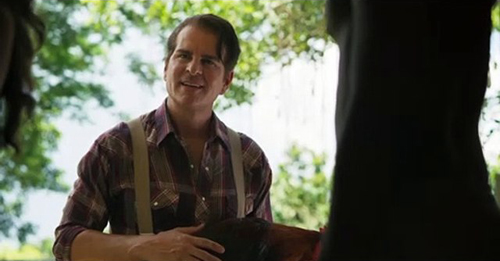
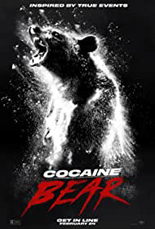 Directing the sequel to a film you previously starred in? Makes sense given Pitch Perfect’s formula. How about reviving America’s most recognizable trio of woman super-spies? Sure, singing and espionage go hand in hand. But helming the origin story of one of the weirdest roadside attractions … fuck it, why not?
Directing the sequel to a film you previously starred in? Makes sense given Pitch Perfect’s formula. How about reviving America’s most recognizable trio of woman super-spies? Sure, singing and espionage go hand in hand. But helming the origin story of one of the weirdest roadside attractions … fuck it, why not?
Elizabeth Banks’ Cocaine Bear is — perhaps needless to say — a strange beast. Imagine if Kangaroo Jack mated with Final Destination, and then the baby blew at least 200 rails. What follows is a mostly fun romp with a few too many storylines that sobers the woodland rage before it really takes off.
Cocaine Bear wastes no time getting its truth out of the way. A drug smuggler accidentally plummets to his death while offloading hundreds of ounces of Colombian sugar. Shortly thereafter, a black bear eats it. And thus ends the film’s historical ties. Instead of dying from a massive overdose, the bear (aka “Pablo Escobear”) goes on a daylong rampage that would make Tony Montana jealous.
Meanwhile, a mother tries to find her school-ditching daughter; three delinquents stumble upon a portion of the coke; a grieving widower goes on a recovery mission with his drug-pin father’s muscle; a detective tries to execute the biggest narcotics bust across Tennessee and Georgia; and at least three other tangents too many rounds out this black comedy of errors.
 When Cocaine Bear’s at its best, it’s a gorgeous, gory and gag-filled mess. Dismembered legs, tragic timing and a monster coked out of its gourd is hilarious, albeit rarely terrifying. By the time the film’s star crashes into premature hibernation, fatal whoopsies might have a higher body count than the bear itself.
When Cocaine Bear’s at its best, it’s a gorgeous, gory and gag-filled mess. Dismembered legs, tragic timing and a monster coked out of its gourd is hilarious, albeit rarely terrifying. By the time the film’s star crashes into premature hibernation, fatal whoopsies might have a higher body count than the bear itself.
Unfortunately, screenwriter Jimmy Warden’s compulsion to build intrigue through needless characters detracts from what the tagline asked we “get in line” to see. It has as big a cast as It’s a Mad, Mad, Mad, Mad World with about an eighth of the charm. It’s saved by a few clutch performances, notably comedian Scott Seiss, Margo Martindale and the late, great Ray Liotta.
Cocaine Bear’s first hit is hard to beat, but each subsequent line is met with diminishing returns, save a ridiculous ambulance chase. The film is a reminder, however, that creature features should never take themselves too seriously. Plus, it opens up the door for other insane, drug-induced animals to follow. Ketamine Koala or Shroom Shark, anybody? Hell, Tusko, an elephant that died after being injected with 279mg of LSD in 1962, could very well be Cocaine Bear’s spiritual successor. —Daniel Bokemper

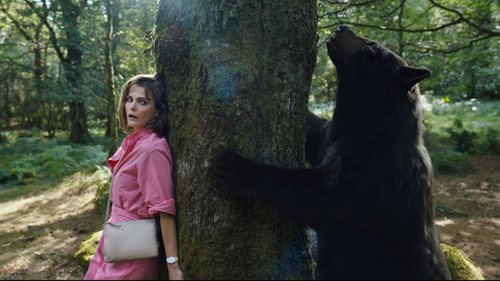

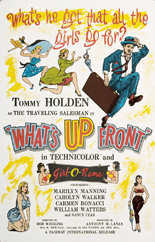 What’s a nudie cutie without the nudie? Why, it’s What’s Up Front!, directed by Bob Wehling, scripter of 1962’s infamous
What’s a nudie cutie without the nudie? Why, it’s What’s Up Front!, directed by Bob Wehling, scripter of 1962’s infamous 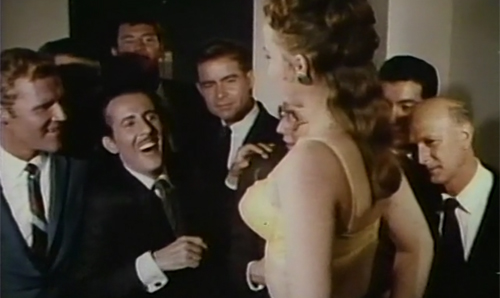

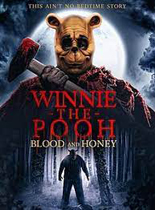 Contrary to popular belief, the worst type of movie isn’t a bad one; it’s a bad one that’s not any fun.
Contrary to popular belief, the worst type of movie isn’t a bad one; it’s a bad one that’s not any fun. 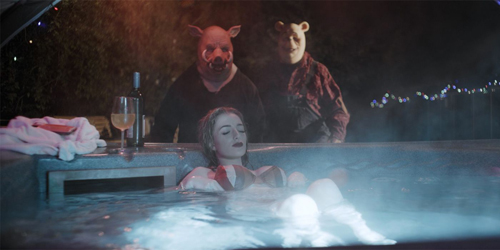
 Between its kills are enough padding to generously stuff the fluff of the pillows of every orphanage, hospital and hostel within a 100-mile range. I get the curiosity factor; I, too, succumbed. But I implore you: Stick with the trailer. Life’s too short. So short I’ll tell you how the movie ends: Pooh repeatedly stabs Maria in the head; fade to credits; everyone is the audience is agog, like, “What? That’s the finish? Is a scene missing?”
Between its kills are enough padding to generously stuff the fluff of the pillows of every orphanage, hospital and hostel within a 100-mile range. I get the curiosity factor; I, too, succumbed. But I implore you: Stick with the trailer. Life’s too short. So short I’ll tell you how the movie ends: Pooh repeatedly stabs Maria in the head; fade to credits; everyone is the audience is agog, like, “What? That’s the finish? Is a scene missing?”
 Even if only for marketing purposes, the possessive movie title is usually reserved for your Alfred Hitchcocks and John Carpenters and your Stephen Kings — you know, your name-brand filmmakers and creatives. Nonetheless, here’s Phil Herman’s Doomsday Stories.
Even if only for marketing purposes, the possessive movie title is usually reserved for your Alfred Hitchcocks and John Carpenters and your Stephen Kings — you know, your name-brand filmmakers and creatives. Nonetheless, here’s Phil Herman’s Doomsday Stories. 
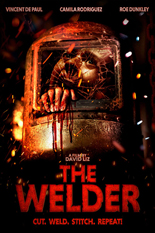 In merging horror with racial politics, Florida-based filmmaker David Liz seems to draw inspiration from Jordan Peele’s
In merging horror with racial politics, Florida-based filmmaker David Liz seems to draw inspiration from Jordan Peele’s 